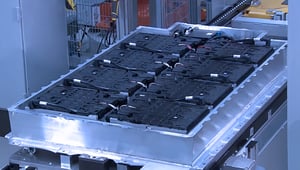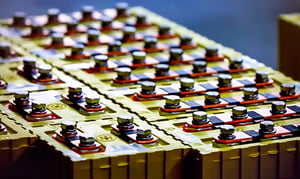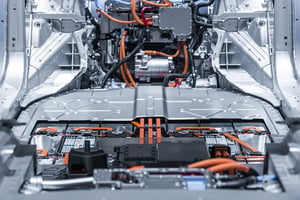It is coming, slowly but surely. The shift to electric vehicles (EVs) is happening, thanks to legislative mandates and early adopters worldwide. While the days when sales of EVs will outnumber those of internal combustion-engine (ICE) vehicles are a decade or two in the future, the consequences for the automotive supply chain need to be understood and acknowledged now.
Most EVs will retain the form factors of their ICE predecessors. They will have four wheels, conventional doors, a steering wheel, accelerator and brake pedals, and all of the comfort, safety, and convenience equipment that consumers have come to expect. But under their body panels, there are differences that will affect the vehicle production process.
EVs are simpler than ICE vehicles
 EVs have fewer components, making them easier and quicker to assemble. This will negatively impact manufacturers of essential ICE systems that are unneeded on EVs, including engine cooling, exhaust and fuel systems. Rotating and reciprocating engine parts like camshafts, crankshafts, pistons and valves will also be unnecessary. Likewise, compact electric motors will reduce the need for large metal castings such as engine blocks and transmission cases.
EVs have fewer components, making them easier and quicker to assemble. This will negatively impact manufacturers of essential ICE systems that are unneeded on EVs, including engine cooling, exhaust and fuel systems. Rotating and reciprocating engine parts like camshafts, crankshafts, pistons and valves will also be unnecessary. Likewise, compact electric motors will reduce the need for large metal castings such as engine blocks and transmission cases.
The secondary impact of a simpler vehicle architecture is that much less labor will be required to build an EV. This will reduce the headcount in assembly plants by an estimated 30%.
Finally, EVs will need much less after-sale servicing and parts. While EVs will need their tires and wiper blades replaced periodically, there will be no oil changes, fuel injector cleanings or radiator flushes required.
There will be winners as well as losers
 The lithium-ion battery is the single most expensive (and heaviest) part of an EV. This is why an EV costs about $10,000 more than an equivalent ICE vehicle. Costs will drop over time, and EV/ICE price parity will likely be achieved by 2030. Some manufacturers have decided to make their own batteries, while others have partnered with established battery suppliers. Batteries will be a profitable market for companies that can move their technology forward as they reduce cost, while avoiding the trap of becoming a commodity.
The lithium-ion battery is the single most expensive (and heaviest) part of an EV. This is why an EV costs about $10,000 more than an equivalent ICE vehicle. Costs will drop over time, and EV/ICE price parity will likely be achieved by 2030. Some manufacturers have decided to make their own batteries, while others have partnered with established battery suppliers. Batteries will be a profitable market for companies that can move their technology forward as they reduce cost, while avoiding the trap of becoming a commodity.
Other growth areas for EV parts suppliers include powertrains (electric motors, gear drives and axles), embedded software (power electronics), stampings (charging ports, battery enclosures, motor parts and housings) and lightweight aluminum or composite body panels (to offset battery weight).
Logistic and supply chain issues
 With current U.S. EV sales below the 2% mark, future production volumes are a big unknown. As the industry slowly ramps up EV production, many manufacturers will use build-to-order models, which will require close OEM and supplier cooperation and communication. This pushes the manufacturer’s uncertainty about a given EV’s sales potential onto the suppliers.
With current U.S. EV sales below the 2% mark, future production volumes are a big unknown. As the industry slowly ramps up EV production, many manufacturers will use build-to-order models, which will require close OEM and supplier cooperation and communication. This pushes the manufacturer’s uncertainty about a given EV’s sales potential onto the suppliers.
The higher electrical and electronics content of the average EV will demand a different type of expertise. Improved safety practices will also become necessary, due to the high operating voltages of today’s EVs.
Other issues related to the heavy and potentially hazardous EV batteries include the expense of shipping the batteries, overloading transport trucks, and airlines and shipping companies potentially refusing to transport them due to their fire hazard.
How manufacturers can stay in the lead on EVs
Both OEMs and suppliers will be walking a tightrope during the gradual progression from ICE vehicles to EVs. It will be necessary to have expertise in both of these areas, while closely monitoring the rate of the ICE-to-EV transition in each individual market. Companies currently dependent on ICE vehicles should be planning to evolve into an essential part of the coming EV future.
To learn more about Radwell's solutions for manufacturers
For a behind the scenes look at Radwell


